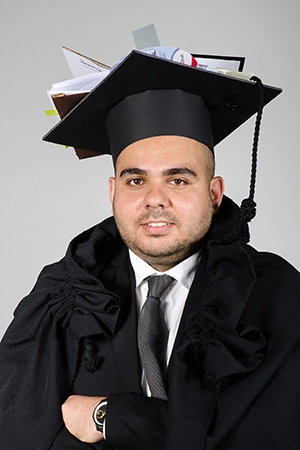Ahmad Osman
Automated Evaluation of Three Dimensional Ultrasonic Datasets
Abstract
Non-destructive testing has become necessary to ensure the quality of materials and components either in-service or at the production stage. This requires the use of a rapid, robust and reliable testing technique. As a main testing technique, the ultrasound technology has unique abilities to assess the discontinuity location, size and shape. Such information play a vital role in the acceptance criteria which are based on safety and quality requirements of manufactured components. Consequently, an extensive usage of the ultrasound technique is perceived especially in the inspection of large scale composites manufactured in the aerospace industry.
Signicant technical advances have contributed into optimizing the ultrasound acquisition techniques such as the sampling phased array technique. However, acquisition systems need to be complemented with an automated data analysis procedure to avoid the time consuming manual interpretation of all produced data. Such a complement would accelerate the inspection process and improve its reliability.
The objective of this thesis is to propose an analysis chain dedicated to automatically process the 3D ultrasound volumes obtained using the sampling phased array technique. First, a detailed study of the speckle noise aecting the ultrasound data was conducted, as speckle reduces the quality of ultrasound data. Afterward, an analysis chain was developed, composed of a segmentation procedure followed by a classication procedure. The proposed segmentation methodology is adapted for ultrasound 3D data and has the objective to detect all potential defects inside the input volume. While the detection of defects is vital, one main diculty is the high amount of false alarms which are detected by the segmentation procedure. The correct distinction of false alarms is necessary to reduce the rejection ratio of safe parts. This has to be done without risking missing true defects. Therefore, there is a need for a powerful classier which can eciently distinguish true defects from false alarms. This is achieved using a specic classication approach based on data fusion theory.
The chain was tested on several ultrasound volumetric measures of Carbon Fiber Reinforced Polymers components. Experimental results of the chain revealed high accuracy, reliability in detecting, characterizing and classifying defects.
